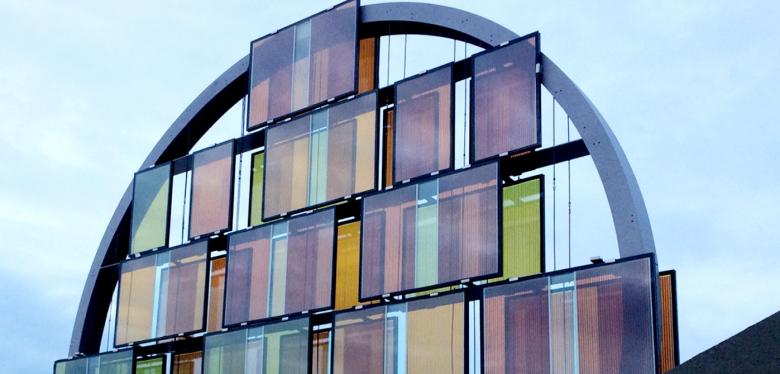Glass solar cells: efficient and aesthetic
Since the production of the first solar cell in 1883, the photovoltaic systems underwent a big evolution. If the first cell device by Charles Fritts was only efficient up to 1%, actual cells are far more efficient… and they can even become decoration. Like the elements developed by Glass 2 Energy, who recently conducted a workshop in the swissnex Lab.
Imitating nature
The École Polytechnique de Lausanne (EPFL) spin-off Glass 2 Energy (G2E) commercialises glass cells which imitate photosynthesis (the way plants use sunlight to produce energy for themselves). Mr. Asef Azam, CEO of G2E, dipl. ing. EPFL, has an extensive 18 year long experience in dye-sensitized solar cells on research and industrial level. He explains how his product works in a few words: “The mechanism of transformation is a direct inspiration of what happens in a plant leaf when it receives light. We imitate the natural process by transforming the light photons into electrical energy.”
Swiss innovation brought to Kazakhstan
Visitors of the Swiss Pavilion had the opportunity to experience this Swiss flair in technology for themselves. During short workshops held in the swissnex Lab, people from young to old stood to benefit from Asef Azam’s and his team’s knowledge, who demonstrated how dye-sensitized cells work, for example by tinting them with tea or berry juice. Visitors could then slip into the shoes of a Swiss researcher… at least for 15 minutes.
The Future of solar cells
Mr. Azam expresses positive feelings towards the future solar cells, glass cells in particular. He believes that these panels will even change our way of living. During his workshops, the scientist emphasized on the importance of using solar energy in domestic premises: “Thanks to these cells, buildings are not only using energy but also producing it.” If they would reach global commercialization level, dye-sensitized solar cells could become a small revolution in the world on construction materials.
By using buildings as a producer of energy, especially in a world of growing metropoles with skyscrapers springing up like mushrooms, this technology would offer a serious alternative in clean energy in future times. The plus side is, since the cells are made of glass, they add an aesthetic side to the building.

The importance of those Panels for Astana
“By using our panels on the outside of a building, it becomes a mini energy plant”, adds Azam. In a city with multi-stories buildings, such as Astana, vast surfaces could be covered with Energy Glass. Installed in some projects in Germany, Italy and Austria, Glass 2 Energy panels also help raise awareness energy to the building visitors. As Azam puts it: “It is important that people realize that we need to change our perception of how we use or produce energy.” According to the scientist, who says he is “happy to be an acting agent in the energy transition”, it is this planet’s best shot at a greener future.
